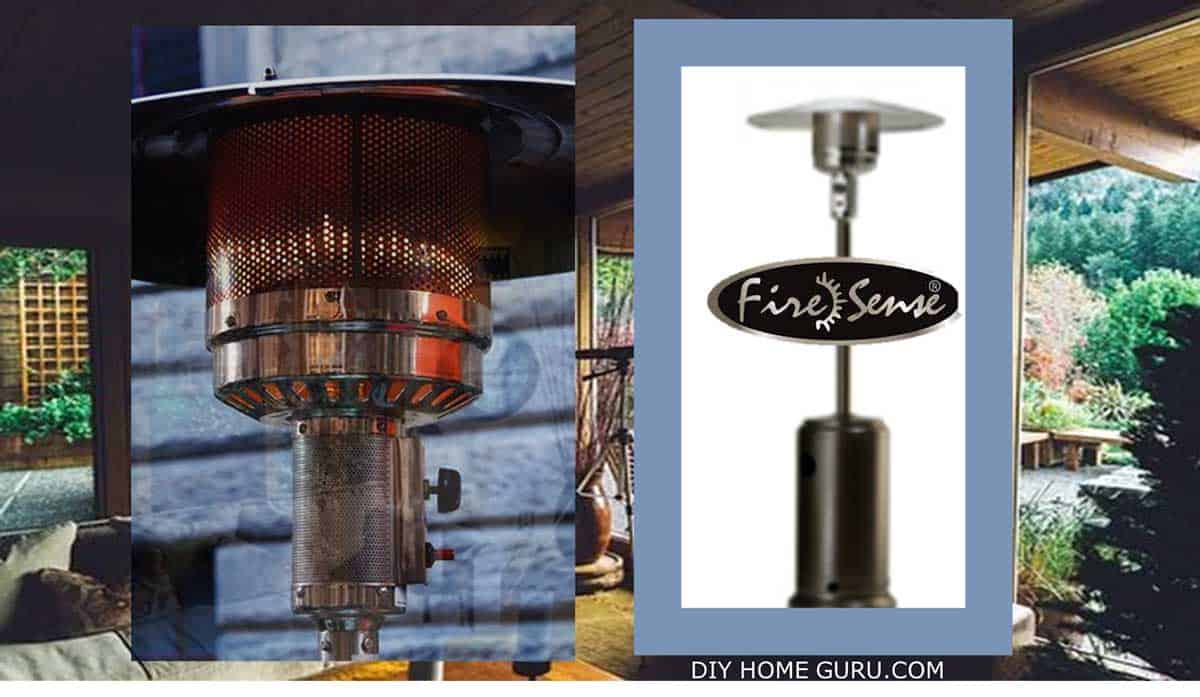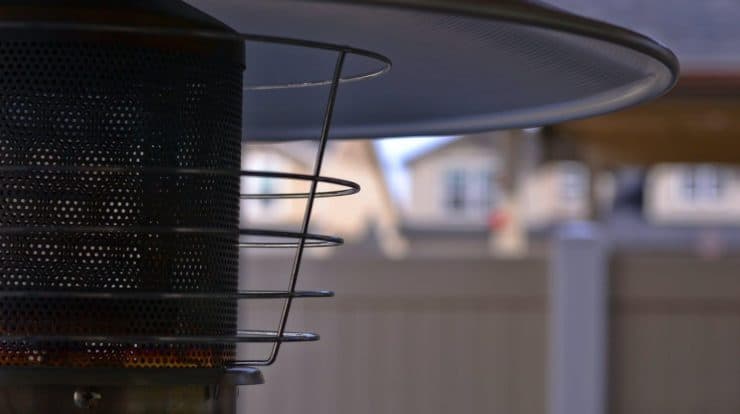A patio heater is a great investment if you live in zones where the temperature gets colder during certain months of the year, especially in the autumn and winter months. There is nothing better than being able to extend your day until late in the evening so that you can enjoy the outdoors a bit more in warmth later in the year especially during the autumn and winter months.
I sill have to wear warm clothing but the patio heater makes it bearable and takes off the chill. There’s nothing better than being able to go outside and enjoy your beautiful patio garden with your friends and family. Call me strange, but I enjoy the glow that is given by the patio heater, it gives the space a feeling of warmth and intimacy.
When it is time to venture indoors, you may ask yourself the question, can patio heaters be used indoors? And if so, what type of patio heaters can safely be used indoors? This is critically important if you do not want to switch on your central heating.
Can Patio Heaters be Used Indoors?
Electric patio heaters can be used indoors as well as outdoors because they don’t produce actual flames or require ventilation. However, propane and natural gas patio heaters produce actual flames and might not be suitable for indoor use because of the particulate that they give off. In addition, open fires carry with it a higher fire risk. Even though electric heaters don’t produce actual flames, they still get extremely hot and so extra precautions need to be observed in order to operate it safely indoors.
In general, outdoor patio heaters can be used indoors but you’ll need to make a few adjustments to your set up to get the best results. The guidance provided by the manufacturer has to be followed precisely, for example, you can’t leave the patio heater on unattended, the risk is simply too great when indoors.
If you are in need of a great patio heater that can be used indoors consider the TRUSTECH Remote Control Adjustable 1500W Infrared Patio Heater with Overheat Protection on Amazon. It comes highly rated by customers.
The heat generated by the patio heater can become intense when indoors, therefore, you may need to turn the gauge down a bit. While indoor, the heater becomes more of a trip hazard, as a result, you’ll need to take extra precautions to make sure nothing happens to tip over the patio heater
If you are using an electric patio heater the pull of electricity from sockets already occupied by other equipment may cause it to overload the breaker and increase the risk of a fire hazard.
What Types of Patio Heaters Can Be Use Indoors?
Your investment in a particular type of patio heater will generally depend on the space, indoor or outdoor, that you want to get warm. If you need a heater for outdoor use you will have a lot of options.
However, when it comes to indoor patio heaters, you are limited for choice. On the other hand, if you need a patio heater that offers flexibility, suitable for both indoor and outdoor use, you’ll be limited to using either an electric-powered patio heater or an infrared patio heater.
Natural gas or propane patio heaters are not suitable for enclosed space without a natural breeze blowing because of the problem of carbon monoxide.
Again, electric-powered patio heaters are suitable for indoor use if you want to get rid of the indoor chills without switching on the central heating. You have to buy the right size that is capable of heating the space that you require.
Find out how to calculate the output that you would need to warm your desired space. If you warm an area of the home that is extremely cold it is better to use infrared heaters instead of traditional electric heaters because they radiate more heat.
Why you should never use Propane or Natural gas Patio Heaters Indoors? The Smart Answer.
Propane or Natural gas Patio Heaters works by burning fuel which gives off harmful particulates like carbon monoxide, nitric oxide, and nitrogen dioxide. If these harmful gases are inhaled in large amounts it can be fatal.
Since the standards for outdoor heaters are not as strict as those for indoor heaters it is advisable not to use them indoors because if these gases circulate inside the house it may cause suffocation and death. It is for this reason why propane heaters are now designed to lower the level of risk for the homeowner.
Most patio heaters now come with anti-tilt safety mechanism as well as an automatic shut-off button that instantly cuts the gas supply if a malfunction is detected. If you experience persistent tiredness, shortness of breath, headaches, nausea, vomiting, and loss of consciousness you may be suffering from carbon monoxide poisoning.
I would not suggest it but if you decide to use these types of patio heaters in a closed space like in your garage, workshop or room the emissions from these gases can be fatal so make sure that the room is ventilated and the heater is away from anything that is combustible.
Again, it is advisable never to use in your garage, workshop or room with the doors and windows closed. In order to be safe, don’t ever use indoors. Period. As they say, it is better to be safe than sorry.
Electric or Infrared Patio Heaters Safety Precaution 
When Using Electric or Infrared Patio Heaters indoors there are a few safety precautions that you have to be mindful of. Electric patio heaters generate a lot of heat. Heat is one element of the fire triangle. The other elements include fuel and oxygen.
You do not want the three elements of the fire triangle to meet because it will start a fire that may destroy your house or property. In order to reduce the risk of fire here are a few basic precautions that you can follow:
Secure the extension cord – by securing the extension cord so that it does not become a trip hazard. If you trip over the infrared heater onto the carpet fire can result. Especially if it is not removed from the carpet immediately.
Secure the heater itself – make sure you guard the patio heater if you have children in the home or adult with a learning difficulty because they may hurt themselves.
Position the patio heater – place the patio heater in a location where it is away from a fire source or things that can easily catch fire.
Do not Cover while hot or in operation – Since this product generates a lot of heat when operational you do not want to cover it with anything. If you do so while it is in operation and is very hot the item that you use to cover the device may catch fire.
General safety checks
Propane tanks are virtually indestructible but always check for gas leaks at the connection points. Check for faulty connectors, leaking tubes, and weak spots on the tank if rusty and dented.
If you smell propane shut off the propane supply immediately. Propane leak should be dealt with immediately because it is a fire risk.
Always check for holes or gaps in the pipe or in the burner’s so as to avoid accidental bursts of fire.
Never smoke or drink alcohol while assembling the heater. You should also not be intoxicated because your reaction time to deal with incidents will be slowed.
Conclusion
Patio heaters are a great source of extra heat during summer nights and winter months to help keep their friends and family warm. If you are going to need extra heat outdoors consider the type of heater you use for specific types of patios.
If you cherish flexibility and need a patio heater that can be used both indoor and outdoor then invest in a good quality indoor patio heater. Remember to avoid propane and gas patio heaters and invest in a patio heater that uses electricity.
You can get one that utilises infrared technology, the glow is so awesome and it gives off a lot of heat. The ideal dream is to enjoy the warmth in a room without wasting money warming up the entire house. Warming up only a small space will suffice because only a small room needs warmth.
Visit the ultimate guide to patio heaters page by DIY Home Guru.





